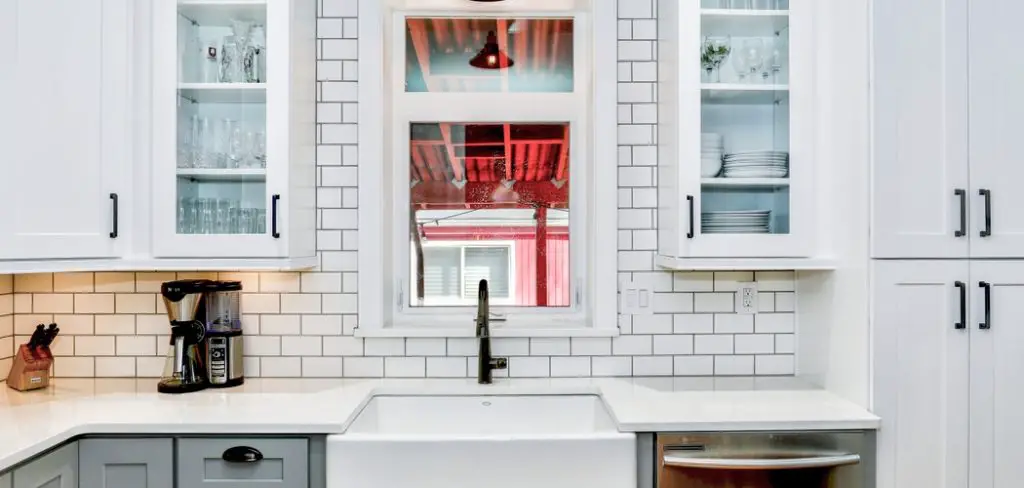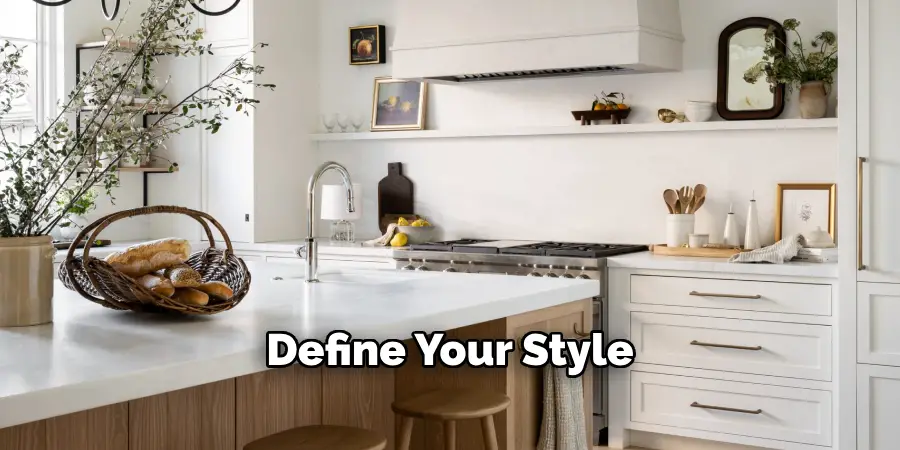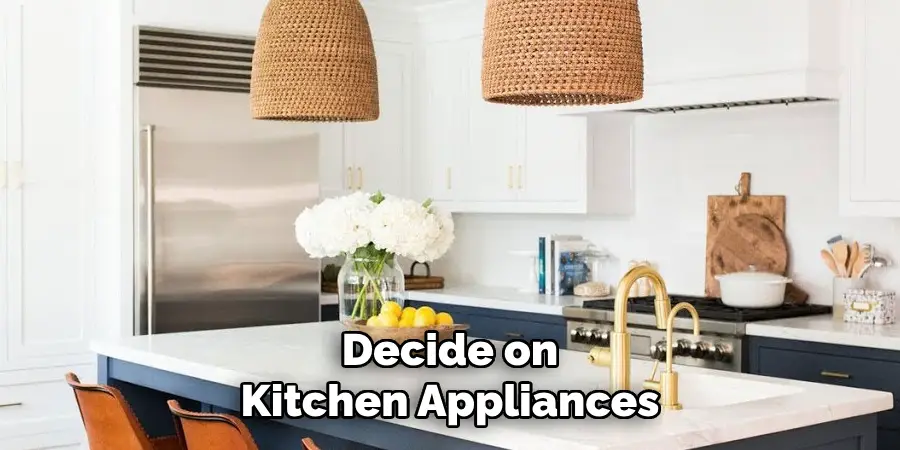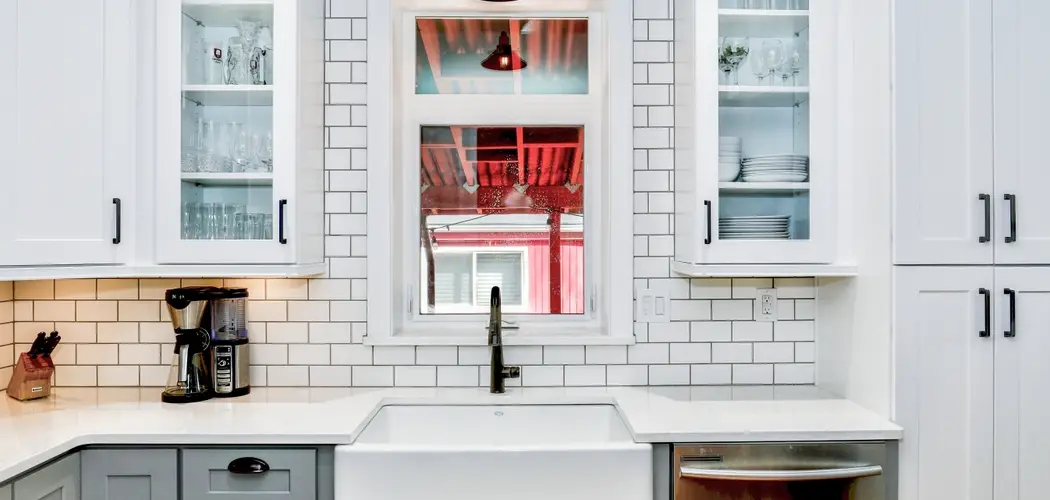Styling a kitchen involves more than selecting the latest appliances or trendy paint colors—it involves creating a functional and aesthetic space that reflects your taste.

Whether you’re aiming for a sleek, modern look, a cozy farmhouse style, or a bold, eclectic mix, understanding the critical elements of design is crucial. From cabinetry and countertops to lighting and layout, each component plays a significant role in achieving a harmonious and inviting atmosphere. A well-styled kitchen enhances the overall appeal of your home and improves the efficiency and enjoyment of your culinary activities.
In this guide on how to style a kitchen, we will explore practical tips and creative ideas to help you transform your kitchen into a space that is both beautiful and practical.
What Will You Need?
Before diving into the design process, you must clearly know what you want to achieve and gather all the necessary materials. Here are some items that are commonly used in kitchen styling:
- Cabinetry: Cabinets not only provide storage space but also serve as a significant visual element in the kitchen. Choose cabinets that complement your desired style, whether classic wood, minimalist white, or colorful statement pieces.
- Countertops: The countertop is another prominent surface in the kitchen and can significantly impact its overall look. Popular options include granite, marble, quartz, and butcher block.
- Flooring: Kitchen flooring should be both durable and visually appealing. Options range from hardwood, tile, and laminate to vinyl and concrete.
- Backsplash: A backsplash is an opportunity to add texture, color, and personality to your kitchen. Popular choices include subway tiles, mosaic tiles, and natural stone.
- Lighting: Proper lighting is essential for both functionality and ambiance in the kitchen. Consider a mix of overhead lights, task lights under cabinets, and decorative fixtures above the island or dining area.
- Hardware: Hardware such as cabinet handles, drawer pulls, and faucets may seem like minor details but can significantly impact the overall look of your kitchen. Choose finishes that complement other elements in the room.
Once you have all the necessary materials, it’s time to dive into the design process. Keep reading to discover helpful tips and ideas for styling your kitchen.
8 Easy Steps on How to Style a Kitchen
Step 1: Define Your Style
Before embarking on any styling project, it’s fundamental to identify the aesthetic that resonates with you. This step sets the tone for all subsequent decisions and ensures a cohesive look throughout your kitchen. Start by gathering inspiration from various sources such as home improvement magazines, online platforms like Pinterest, and design shows. Consider your home’s architectural style and lifestyle needs when defining your kitchen’s style.
Do you prefer the clean lines and sleek finishes of a modern kitchen, or are you drawn to the warmth and charm of a rustic farmhouse design? An eclectic mix that combines elements from different styles suits your taste. Take some time to reflect on the color schemes, materials, and overall ambiance you wish to create. A clear vision will not only guide your choices in cabinetry, countertops, and other kitchen elements but will also prevent you from feeling overwhelmed by the many options available.

Step 2: Plan Your Layout
Once you’ve defined your style, the next crucial step in styling your kitchen is planning its layout. The layout determines the flow and functionality of the space, making it essential for ensuring efficiency and convenience during cooking and everyday activities. Consider the classic “kitchen work triangle” of the stove, sink, and refrigerator, which should be strategically positioned to minimize the distance and effort while preparing meals.
Choose a layout that best suits your needs depending on the available space and your preference. Popular options include the L-shaped, U-shaped, galley, or island kitchen layouts. It’s also essential to account for traffic flow, ensuring adequate space for movement, especially if multiple people are using the kitchen simultaneously.
Step 3: Choose the Right Cabinets
Cabinetry is at the heart of any kitchen design, significantly influencing the space’s aesthetics and functionality. When selecting cabinets, consider the visual style and the practical needs they fulfill. Opt for sleek, handleless cabinets with high-gloss finishes for a streamlined and modern look. If a traditional or rustic feel is more your style, classic wood cabinetry with ornate details or shaker-style doors might be the right choice. The color of the cabinets also plays a crucial role in setting the tone for the kitchen—light colors can make a space feel larger and more open, while dark tones can add depth and sophistication.

Additionally, think about the storage options you need. Incorporate a mix of shelving, drawers, and pull-out solutions to maximize efficiency and keep the kitchen organized. Selecting the right cabinets will ensure your kitchen remains beautiful and practical, allowing you to make the most of the space.
Step 4: Select Your Countertops
Countertops are not only a functional workspace in the kitchen but also a key design element that can enhance the space’s overall aesthetic. When choosing countertops, consider materials that suit your style, usage, and budget. Granite and marble are famous for their durability and luxurious appearance, while quartz offers a low-maintenance option with various colors and patterns. For a warm, rustic feel, consider butcher block countertops, which add natural texture and can be easily sanded and resealed.
Concrete countertops provide an industrial edge and can be custom-colored for a unique look. Think about how you use your kitchen—if you do a lot of baking, an excellent, smooth surface like marble may be ideal. After selecting the material, consider the color, finish, and edge style, considering that these choices should complement your kitchen design. Investing time in choosing the right countertop will contribute significantly to both the appearance and functionality of your kitchen.
Step 5: Decide on Kitchen Appliances
Choosing the right kitchen appliances is an integral part of the design process, as they impact both functionality and the overall aesthetic. Start by considering your cooking habits and lifestyle needs—whether you are an avid chef who requires a professional-grade range or prefer the convenience of energy-efficient appliances with intelligent technology. Look for appliances that match your kitchen style; for example, sleek stainless steel options work well in modern kitchens, while retro-style appliances can enhance a vintage or eclectic theme.

Remember to consider the size and placement of each appliance within your kitchen layout, ensuring they fit seamlessly and contribute to an efficient workflow. Modern appliances come with various finishes like matte, black stainless, or integrated models that blend with cabinetry, providing additional ways to tailor the kitchen’s look to your style. Prioritizing practicality and design in your appliance choices will enhance your kitchen’s usability and aesthetic appeal.
Step 6: Integrate Lighting Solutions
Lighting is a crucial component in kitchen design, affecting the space’s functionality and ambiance. The proper lighting enhances visibility for tasks and sets the mood in the kitchen. Begin by incorporating different lighting sources: ambient lighting for general illumination, task lighting for focused areas like countertops and the sink, and accent lighting to highlight specific features such as backsplash or display cabinets.
Consider pendant lights for an island or dining area to add a touch of style and flair. Recessed lights are an excellent choice for a clean, unobtrusive look, whereas under-cabinet lighting can provide practical illumination for food preparation tasks. Intelligent lighting options allow for varying brightness and color temperatures, offering further customization to suit your activities and preferences.
Step 7: Add Personal Touches
The final step in styling your kitchen is adding personal touches that reflect your personality and bring warmth to the space. Consider incorporating decorative elements like artwork, plants, or a statement piece to add character. Choose accessories that complement your kitchen’s color scheme and style, such as coordinating dishware, glassware, or utensils displayed on open shelves.
A colorful rug or unique backsplash can also inject personality and tie together the overall design. Remember that less can be more; avoid clutter by carefully selecting items that serve both a decorative and functional purpose. Personal touches make your kitchen uniquely yours, creating an inviting and enjoyable space for cooking and gathering.

Step 8: Incorporate Smart Technology
Embracing innovative technology in your kitchen can exponentially enhance both convenience and efficiency. Today’s intelligent kitchens have advanced features that make cooking and meal prep more accessible and enjoyable. Start by considering smart appliances like ovens, refrigerators, and dishwashers that can be controlled remotely via smartphone apps, allowing you to monitor cooking progress or start preheating before you arrive home. Brilliant faucets with touchless technology offer water-saving benefits and a more hygienic solution when preparing food.
Consider integrating smart speakers or displays to provide recipe guidance, play music, or control other connected devices while you cook. Automated lighting solutions that respond to voice commands or motion sensors can improve safety and ambiance. Embedding technology that aligns with your daily routine and preferences can make your kitchen a hub of activity and a state-of-the-art space designed to accommodate the modern lifestyle.
By following these steps, you can transform your kitchen into a functional and stylish space that reflects your unique personality and needs.
Conclusion
How to style a kitchen is a journey that combines practicality with personal flair, ultimately creating a space that meets your everyday needs and encapsulates your unique style.
By carefully selecting materials, appliances, and lighting that suit your functional requirements and aesthetic preferences, you can significantly enhance the look and feel of your kitchen. Remember, the key is to harmonize design elements with functionality, ensuring the workspace is efficient and enjoyable. Personalized touches are crucial as they infuse the kitchen with warmth and individuality. Whether incorporating cutting-edge technology or opting for classic styles, the goal is to make your kitchen a haven for creativity and comfort.
With thoughtful planning and design, your kitchen will be a reflection of you—a vibrant and inviting heart of your home.
About
Angela is the chief editor of Indoorense. She began her career as an interior designer before applying her strategic and creative passion to lifestyle and home.
She has close to 15 years of experience in creative writing and online content strategy for housekeeping and cleaning,home decorations as well as other efforts.
She loves her job and has the privilege of working with an extraordinary team. She lives with her husband, two sons, and daughter in Petersburg. When she’s not busy working she spent time with her family.

